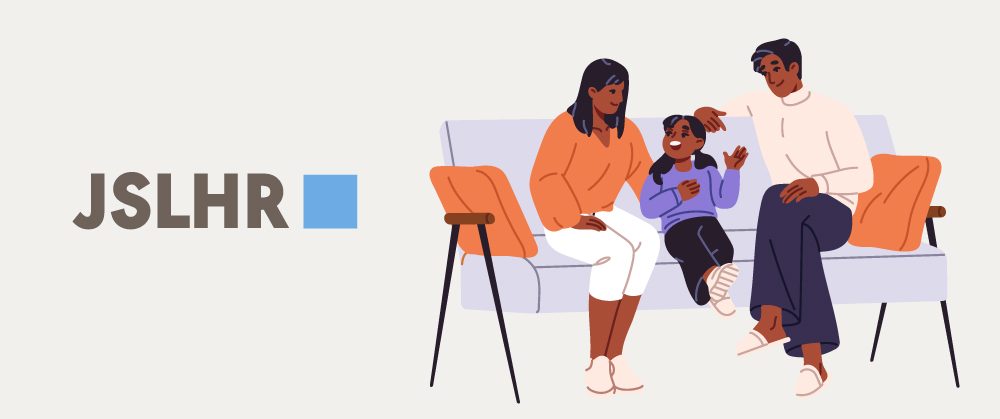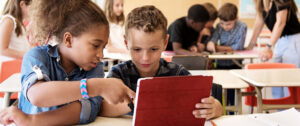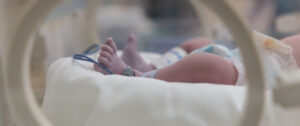In 2022, the Apraxia Kids National Conference brought researchers and clinicians together to discuss the latest developments in childhood apraxia of speech (CAS) as well as future research directions. This annual conference contains a wealth of information for ASHA’s school-based and pediatric speech-language pathologists (SLPs) who work with thousands of children with CAS.
Guest editors Patricia McCabe and Molly Beiting put together a Special Issue in the Journal of Speech, Language, and Hearing Research (JSLHR)—making this timely research available to every ASHA member. Check out some highlights from this conference below!
Apraxia Kids Research Symposium
In the prologue, McCabe, Beiting, and colleagues discussed the dual goals of this issue: To gather the latest data in CAS and to highlight existing research needs. The authors noted that articles in the issue “not only review and synthesize the some of the substantial progress to date but also present novel findings addressing critical research gaps and adding to the overall body of knowledge” (McCabe et al., 2024, p. 3264). They then describe four key questions that researchers should ask during future research into CAS.
Assessment of CAS
Three articles focused on the assessment of CAS. Highman et al.’s tutorial updated clinicians on early features of CAS, presenting new strategies and tools that can be used in identification and intervention.
Murray and colleagues looked at the current standard for clinical diagnosis of CAS—expert clinician judgment—and highlighted the need for standardization and collaboration. Later, Lauretta et al. discussed barriers and enablers to using genetics in the clinic, as our understanding of the genetic basis of CAS grows.
Treatment of CAS
Treatment and outcomes were the focus of a number of articles in the issue, starting with Van Tellingen and colleagues, who introduced speech–music therapy and showed how it can lead to improved speech production. Later, Potter et al. found that a parent-implemented telepractice intervention can be effective for children with CAS but suggested that post-intervention assessment should take place in person, if possible. Elsewhere in the issue, Maas highlighted recent progress in CAS treatment efficacy as well as needs for further research.
Two articles focused on motor-based intervention for children with CAS. Grigos et al. showed that it can lead to refined speech motor control but also to improvements in word accuracy. Next, Wang and Grigos examined how naïve listeners rated speech intelligibility after motor-based intervention.
Thomas and colleagues focused on the efficacy of weekly rapid syllable transition treatment, finding that it was not recommended only once a week. Then, Preston et al. showed how ultrasound biofeedback, when combined with intensive treatment, can help children with CAS with persistent speech errors.
More CAS Research!
CAS is largely associated with speech production issues, but Case and Hollin studied linguistic errors in CAS, finding they were not attributable to speech production errors. Similarly, Velleman and colleagues found that diagnoses of selective mutism and social anxiety disorder were not related to the severity of speech sound disorders in people with CAS.
Next, Lewis et al. described the long-term outcomes for children and young adults with CAS, showing that members of this population are at risk for persistent speech sound errors. Later, Hitchcock and colleagues looked at the speech perception performance of individuals with CAS and speech sound disorder.
Looking Ahead
This special issue contains useful new research for clinicians and researchers who work with CAS; however, McCabe and colleagues stress that more work is needed. “We need to focus on the diversity of people with CAS and better, more efficient implementation of high-level evidence-based practice across the lifespan,” they write (McCabe et al., 2024, p. 3264). You can hear more about the forum in Dr. Beiting’s own words under “Related Videos” below!
We hope that this special issue helps you incorporate the latest findings into your work with children with CAS in the school, clinic, or lab! We’d like to thank Dr. McCabe and Beiting and all of the authors who worked to bring this Special Issue from the Apraxia Kids Conference to ASHA members! Read the entire issue in JSLHR now, or explore the individual articles below.
Related Videos
Explore the Special Issue
Case, J., & Hallin, A. E. (2024). The relationship between speech accuracy and linguistic measures in narrative retells of children with speech sound disorders. Journal of Speech, Language, and Hearing Services, 67(1S), 3340–3358. https://doi.org/10.1044/2023_JSLHR-22-00615
Grigos, M. I., Case, J., Lu, Y., & Lyu, Z. (2024). Dynamic temporal and tactile cueing: Quantifying speech motor changes and individual factors that contribute to treatment gains in childhood apraxia of speech. Journal of Speech, Language, and Hearing Services, 67(1S), 3359–3376. https://doi.org/10.1044/2023_JSLHR-22-00658
Highman, C., Overby, M., Leitão, S., Abbiati, C., & Velleman, S. (2024). Update on identification and treatment of infants and toddlers with suspected childhood apraxia of speech. Journal of Speech, Language, and Hearing Services, 67(1S), 3288–3308. https://doi.org/10.1044/2023_JSLHR-22-00639
Hitchcock, E. R., Swartz, M. T., & Cabbage, K. L. (2024). Preliminary speech perception performance profiles of school-age children with childhood apraxia of speech, speech sound disorder, and typical development. Journal of Speech, Language, and Hearing Services, 67(1S), 3480–3494. https://doi.org/10.1044/2023_JSLHR-22-00634
Lauretta, M. L., Jarmolowicz, A., Amor, D. J., Best, S., & Morgan, A. T. (2024). An investigation of barriers and enablers for genetics in speech-language pathology explored through a case study of childhood apraxia of speech. Journal of Speech, Language, and Hearing Services, 67(1S), 3437–3451. https://doi.org/10.1044/2023_JSLHR-22-00714
Lewis, B. A., Miller, G. J., Iyengar, S. K., Stein, C., & Benchek, P. (2024). Long-term outcomes for individuals with childhood apraxia of speech. Journal of Speech, Language, and Hearing Services, 67(1S), 3463–3479. https://doi.org/10.1044/2023_JSLHR-22-00647
Maas, E. (2024). Treatment for childhood apraxia of speech (CAS): Past, present, and future. Journal of Speech, Language, and Hearing Services, 67(1S), 3495–3520. https://doi.org/10.1044/2024_JSLHR-24-00196
McCabe, P., Beiting, M., Hitchcock, E. R., Maas, E., Meredith, A., Morgan, A. T., Potter, N. L., Preston, J. L., Moorer, L., Aggarwal, P., Ballard, K., Baskall Smith, L., Caballero, N. F., Cabbage, K., Case, J., Caspari, S., Chenausky, K. V., Cook, S., Grzelak, E., . . . Grigos, M. I. (2024). Research priorities for childhood apraxia of speech: A long view. Journal of Speech, Language, and Hearing Services, 67(1S), 3255–3268. https://doi.org/10.1044/2024_JSLHR-24-00196
Murray, E., Velleman, S., Preston, J. L., Heard, R., Shibu, A., & McCabe, P. (2024). The reliability of expert diagnosis of childhood apraxia of speech. Journal of Speech, Language, and Hearing Services, 67(1S), 3309–3326. https://doi.org/10.1044/2023_JSLHR-22-00677
Potter, N. L., VanDam, M., Bruce, L., Davis, J., Eng, L., Finestack, L., Heinlen, V., Scherer, N., Schrock, C., Seltzer, R., Stoel-Gammon, C., Thompson, L., & Peter, B. (2024). Virtual post-intervention speech and language assessment of toddler and preschool participants in babble boot camp. Journal of Speech, Language, and Hearing Services, 67(1S), 3327–3339. https://doi.org/10.1044/2023_JSLHR-22-00687
Preston, J. L., Caballero, N. F., Leece, M. C., Wang, D., Herbst, B. M., & Benway, N. R. (2024). A randomized controlled trial of treatment distribution and biofeedback effects on speech production in school-age children with apraxia of speech. Journal of Speech, Language, and Hearing Services, 67(1S), 3414–3436. https://doi.org/10.1044/2023_JSLHR-22-00622
Thomas, D., Murray, E., Williamson, E., & McCabe, P. (2024). Weekly treatment for childhood apraxia of speech with rapid syllable transition treatment: A single-case experimental design study. Journal of Speech, Language, and Hearing Services, 67(1S), 3392–3413. https://doi.org/10.1044/2023_JSLHR-22-00665
van Tellingen, M., Hurkmans, J., Terband, H., van de Zande, A. M., Maassen, B., & Jonkers, R. (2024). Speech and music therapy in the treatment of childhood apraxia of speech: An introduction and a case study. Journal of Speech, Language, and Hearing Services, 67(1S), 3269–3287. https://doi.org/10.1044/2023_JSLHR-22-00619
Velleman, S. L., Guimaraes, V. N., Klein-Tasman, B. P., Huffman, M. J., Becerra, A. M., & Mervis, C. B. (2024). Relations between selective mutism and speech sound disorder in children with 7q11.23 duplication syndrome. Journal of Speech, Language, and Hearing Services, 67(1S), 3452–3462. https://doi.org/10.1044/2023_JSLHR-22-00721
Wang, E. W., & Grigos, M. I. (2024). Naive listener ratings of speech intelligibility over the course of motor-based intervention in children with childhood apraxia of speech. Journal of Speech, Language, and Hearing Services, 67(1S), 3377–3391. https://doi.org/10.1044/2023_JSLHR-22-00656







